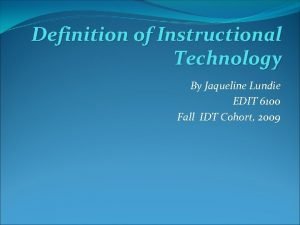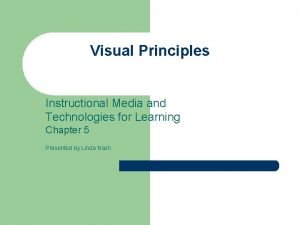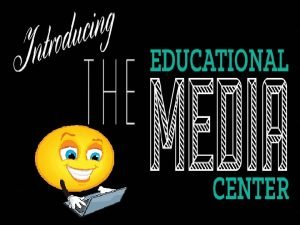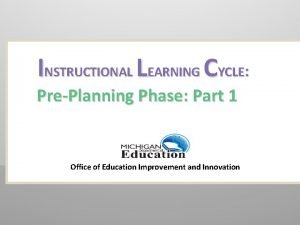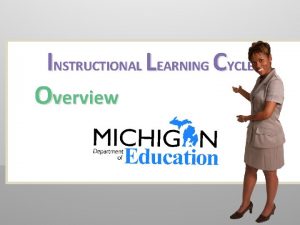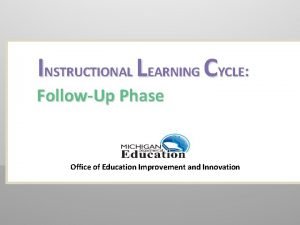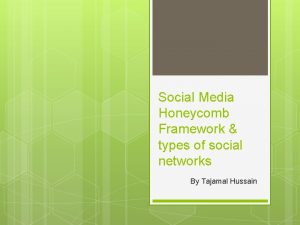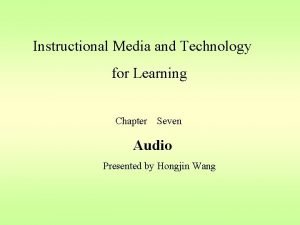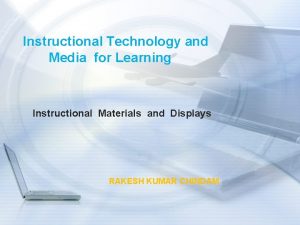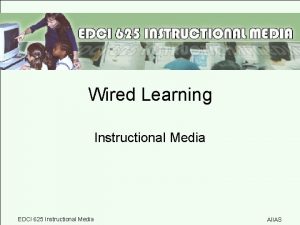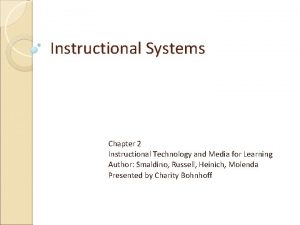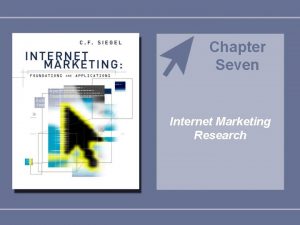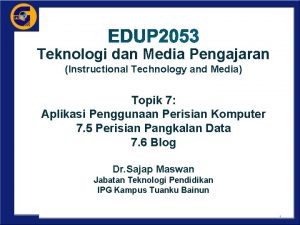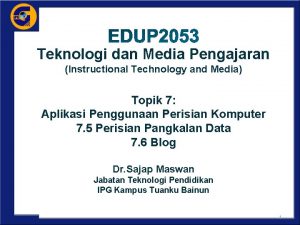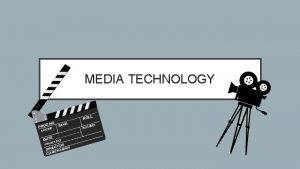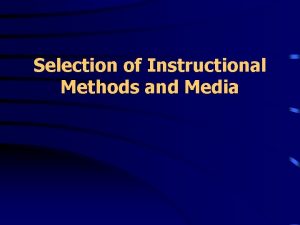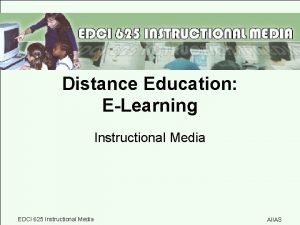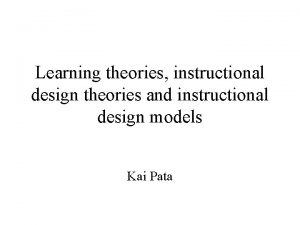Instructional Media and Technology for Learning Chapter Seven
















- Slides: 16

Instructional Media and Technology for Learning Chapter Seven Audio Presented by Hongjin Wang

The Difference and Similarity Between Hearing and Listening • Hearing is a physiological process • Listening is a psychological process • Hearing is the foundation of listening • Hearing and Listening are also teaching and learning process

Developing Listening Skills • Guide listening • Give directions • Ask students to listen for main ideas, or inferences • Use context in listening • Analyze the structure of a presentation • Distinguish between relevant and irrelevant information

Audio Formats • cassette tapes • compact discs • Mp 3

The strengths and limitations of cassette tape The main advantages of audiotape • easy to record • easy to erase • easy to store • not easy to damage The limitation of audiotape • easy to record background noise • easy to become stuck and tangled • not easy to edite

The strength and limitation of compact disc Advantage of compact disc • very durable • High fidelity • No background noise • Random search Limitation of compact disc • Impractical to prepare locally • Initial expense of equipment

The advantages of audio • Inexpensive • Portable • Readily available and simple to use • Ease of lesson preparation • Reproducible • Ideal for teaching foreign language • Stimulating • Repeatable • Selections easy to locate • Resistance to damage • Provide verbal message for nonreaders

The limitations of audio • Fixed sequence • Doesn’t monitor attention • Difficulty in pacing • Potential for accidental erasure

Integrating Audio into classroom Teachers can use Audio Media in all phase of instruction – from introduction of a topic to evaluation of student learning. Students can use audiotape to prepare their class presentations and to learn foreign language

Producing Class Materials on Cassette Tapes • Need a blank audiotape, a tape recorder, a microphone • Prepare class materials to need to recorder Attention: • Maintain a constant distance from the microphone • Speak over the top of the microphone, not directly into it • If you make an error while recorder, stop the tape recorder, reverse it, and then continue recorder.

Checklist for Students/teachers-Prepared Audiocassettes • Minimize extraneous background noise • Maintain constant volume level • Ensure good voice quality and clarity • Express ideas clearly • Maintain conversational tone • Keep listeners involved • Coordinate with worksheet or study guide, if use • Express content clearly • Keep it short

Duplicating and Editing Audiotapes Three methods of duplication Audiotapes The acoustic method—dose not require any special equipment. just two recorder. The electronic method—can avoid unwanted noise from the environment The high-speed duplicator method– require a special machine

Selecting Audio Materials Before selecting audio materials, three more things to need to do are: • Analyzing audience • Stating objective • Ready to select, modify, design audio materials

Utilizing Audio Materials The five Ps for group use of audio materials • Preview the Materials • Prepare the Environment • Prepare the Learners • Provide the Learning Experience

Require Learner Participation Before you begin the lesson, determine how to get and keep students actively involved, One technique is to give students a set of questions to answer during the listening.

Evaluate and Revise Determine how effective the audio materials are: --Gather data by (1) making observations (2) evaluating test results (3) discussing experience with students --Then decide (1) to revise how you use the audio materials (2) to modify the audio materials themselves
 Characteristics of instructional technology
Characteristics of instructional technology Definition of instructional technology
Definition of instructional technology Seven heavenly virtues mal
Seven heavenly virtues mal Visual instructional media
Visual instructional media Educational media centre
Educational media centre Instructional learning cycle
Instructional learning cycle Instructional learning cycle
Instructional learning cycle Instructional learning cycle
Instructional learning cycle Cuadro comparativo entre e-learning b-learning y m-learning
Cuadro comparativo entre e-learning b-learning y m-learning Seven areas of technology
Seven areas of technology Seven functional blocks of social media
Seven functional blocks of social media Formuö
Formuö Novell typiska drag
Novell typiska drag Tack för att ni lyssnade bild
Tack för att ni lyssnade bild Returpilarna
Returpilarna Varför kallas perioden 1918-1939 för mellankrigstiden
Varför kallas perioden 1918-1939 för mellankrigstiden En lathund för arbete med kontinuitetshantering
En lathund för arbete med kontinuitetshantering

